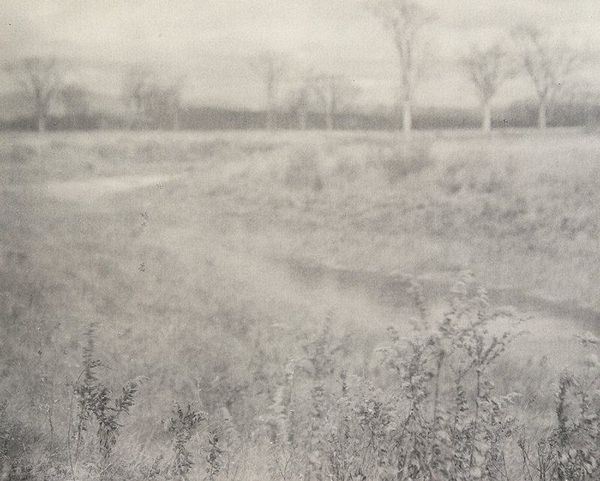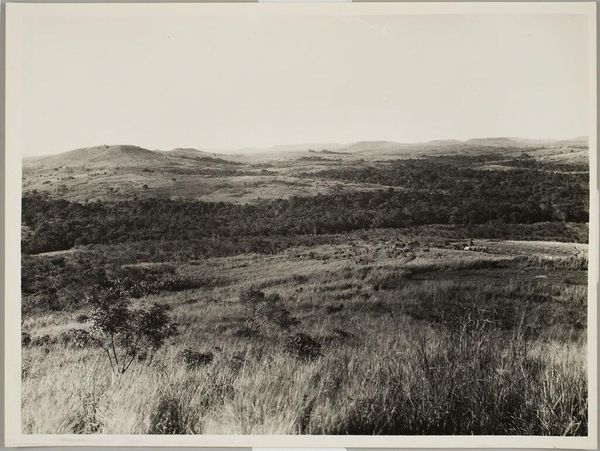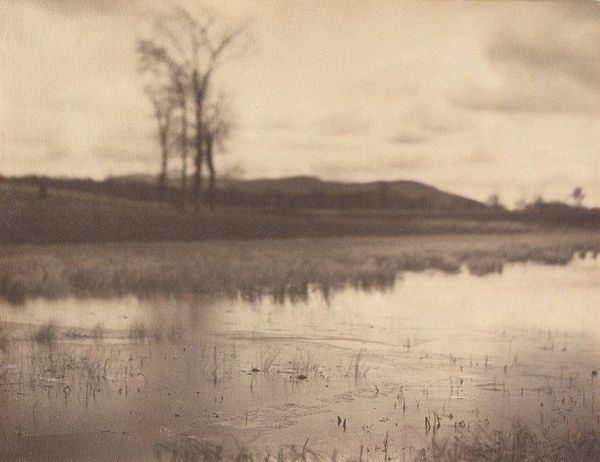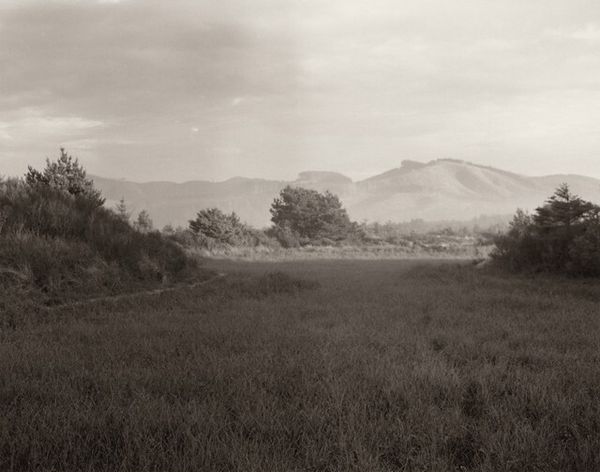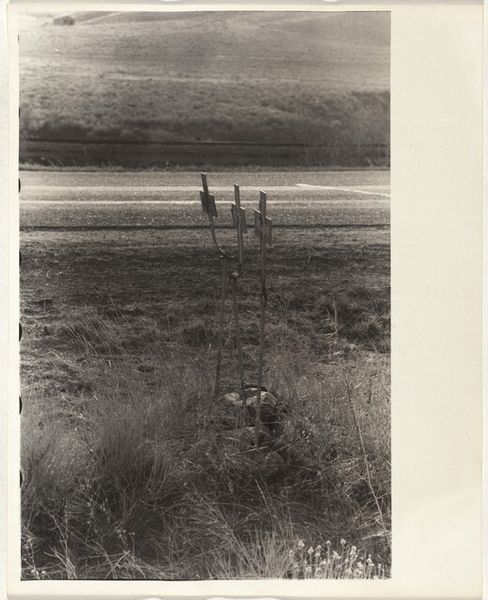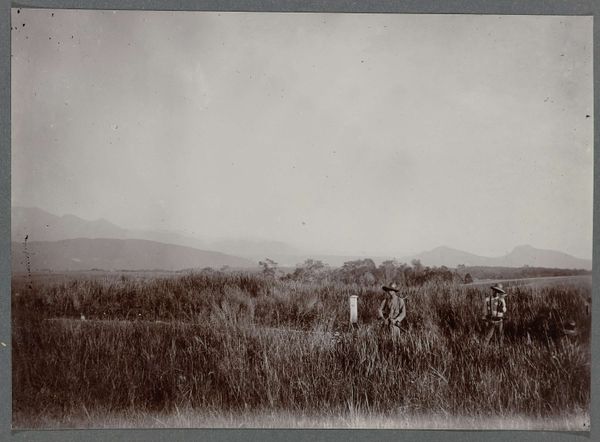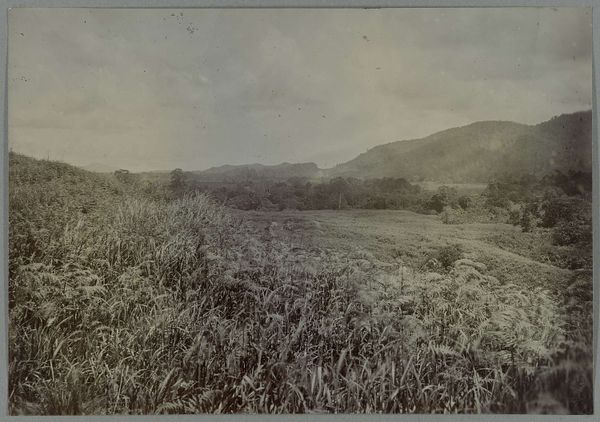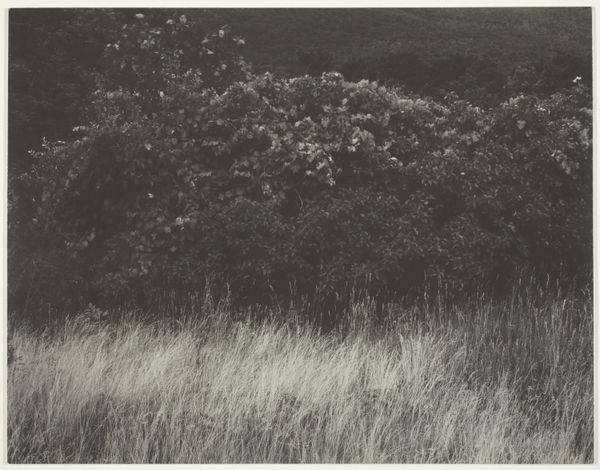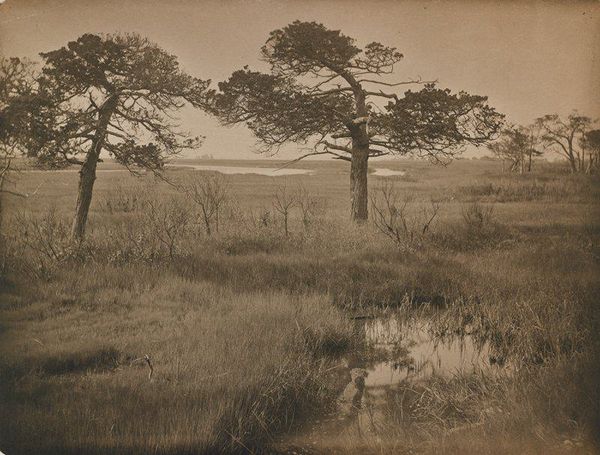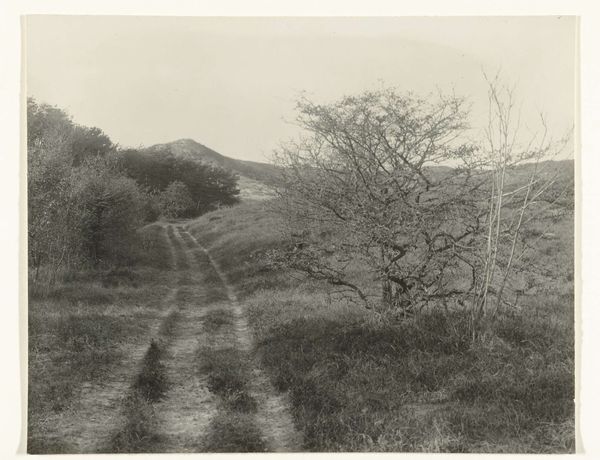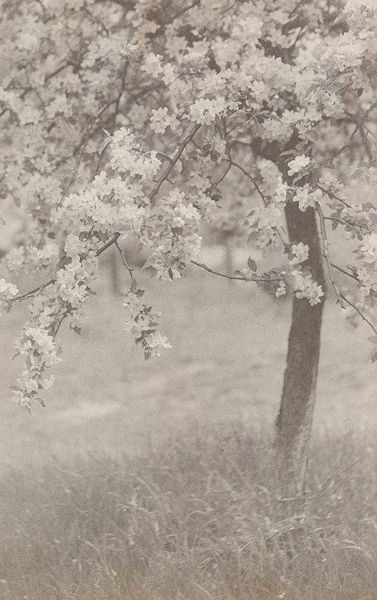
drawing, plein-air, graphite
#
drawing
#
still-life-photography
#
plein-air
#
landscape
#
united-states
#
graphite
#
graphite
#
realism
Dimensions: 9 5/16 x 7 3/8 in. (23.65 x 18.73 cm) (image)9 5/16 x 3/16 in. (23.65 x 0.47 cm) (sheet)
Copyright: No Copyright - United States
Editor: So, this is William B. Post’s photograph "Wild Aster," probably from the late 19th or early 20th century. It’s a graphite drawing in a landscape format. The scene has a kind of melancholic beauty to it. What do you see in this piece that I might be missing? Curator: That melancholy you sensed is palpable. I see a conversation, one rooted in symbolism that echoes across time. The wild aster itself – consider its symbolic weight. It's a late-blooming flower, often associated with remembrance and love that lasts beyond the seasons. Notice how it boldly asserts itself amidst the fading grasses, it feels very intentional. Editor: Yes, the flower stands out despite the muted palette. It is "wild", which seems pertinent. How does that detail change its reading? Curator: Exactly. "Wild" suggests a return to nature, a place beyond cultivation, an unrestrained desire. Does this image echo older traditions, myths and visual cultures which linked particular types of flora to aspects of human character and psychology? The mountain could signify transcendence, aspiration, a journey upwards. A distant lone tree sometimes signifies endurance or isolation. Post seems to weave a whole complex story here. Editor: It’s amazing how much the scene suggests. And it speaks to America, given the setting. Curator: Indeed. These visual cues work together to elicit an emotional response, touching on universal themes of longing, memory, and the transient nature of existence. By embracing that, the symbolic register remains accessible, ensuring this landscape whispers its message to viewers, both today and tomorrow. Editor: This has completely transformed how I view the work. I had not fully grasped how effectively it communicates on such a profound, cultural level. Curator: It reminds us of the enduring power of symbols and how they bridge the past and present through our collective visual vocabulary.
Comments
No comments
Be the first to comment and join the conversation on the ultimate creative platform.
